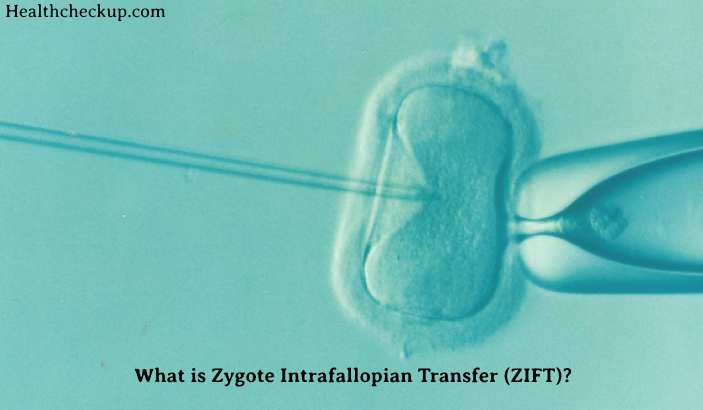Zygote Intrafallopian Transfer (ZIFT) is an assisted reproductive technology (ART) that combines elements of in vitro fertilization (IVF) and gamete intrafallopian transfer (GIFT). This procedure is designed to help couples who are experiencing infertility and have not had success with other treatments. ZIFT involves fertilizing an egg in a laboratory setting and then transferring the resulting zygote into the woman’s fallopian tube.
Indications for ZIFT
ZIFT is typically recommended for couples experiencing specific types of infertility. Some common indications include:
- Tubal Factor Infertility: Blocked or damaged fallopian tubes that prevent the egg and sperm from meeting naturally.
- Male Factor Infertility: Issues such as low sperm count or poor sperm motility that reduce the chances of natural fertilization.
- Unexplained Infertility: When no specific cause of infertility is identified after thorough evaluation.
- Failed IVF or GIFT Cycles: Couples who have not achieved pregnancy with previous IVF or GIFT treatments.
The ZIFT Procedure
The ZIFT procedure involves several steps, including ovarian stimulation, egg retrieval, fertilization, and zygote transfer. Here is a detailed look at each stage of the process:
1. Ovarian Stimulation
Before the ZIFT procedure can begin, the woman undergoes ovarian stimulation to produce multiple eggs. This is achieved through the administration of hormonal medications, such as:
- Gonadotropins: These hormones stimulate the ovaries to produce multiple follicles, each containing an egg.
- Human Chorionic Gonadotropin (hCG): This hormone is administered to trigger the final maturation of the eggs when the follicles are ready.
Throughout this process, the woman’s progress is monitored through blood tests and ultrasound examinations to ensure the optimal number of mature follicles.
2. Egg Retrieval
Once the follicles are mature, the eggs are retrieved through a minor surgical procedure called transvaginal ultrasound-guided aspiration. This procedure involves:
- Anesthesia: The woman is given sedation or anesthesia to minimize discomfort.
- Needle Aspiration: A thin needle is inserted through the vaginal wall and into the ovaries to aspirate the fluid from the follicles, which contains the eggs.
- Laboratory Processing: The retrieved eggs are immediately taken to the laboratory for evaluation and preparation for fertilization.
3. Fertilization
In the laboratory, the retrieved eggs are fertilized with the partner’s sperm or donor sperm. This process involves:
- In Vitro Fertilization (IVF): The eggs and sperm are combined in a petri dish, allowing fertilization to occur naturally.
- Intracytoplasmic Sperm Injection (ICSI): In cases of severe male infertility, a single sperm is directly injected into each egg to facilitate fertilization.
The fertilized eggs, now called zygotes, are cultured for a short period (typically 24 hours) to confirm successful fertilization.
4. Zygote Transfer
The final step of the ZIFT procedure is the transfer of the zygotes into the woman’s fallopian tubes. This is done through a surgical procedure called laparoscopy, which involves:
- Anesthesia: The woman is given general anesthesia to ensure she is comfortable during the procedure.
- Laparoscope Insertion: A thin, lighted tube called a laparoscope is inserted through a small incision in the abdomen to visualize the reproductive organs.
- Zygote Transfer: The zygotes are loaded into a thin catheter and gently placed into one of the fallopian tubes through the laparoscope.
Once the zygotes are in the fallopian tube, they continue to develop and travel toward the uterus, where they implant and result in pregnancy.
Benefits of ZIFT
ZIFT (Zygote Intrafallopian Transfer) offers several potential benefits for couples struggling with infertility:
- Higher Fertilization Rate: Since fertilization occurs in the laboratory, the chances of successful fertilization are higher than natural conception.
- Immediate Transfer: The zygotes are transferred soon after fertilization, mimicking the natural timing of embryo development and transfer.
- Better Embryo Quality: By transferring the zygotes early, there may be a reduced risk of embryo damage during culture.
- Increased Pregnancy Rates: For some couples, ZIFT offers higher pregnancy rates compared to other ART procedures, particularly in cases of unexplained infertility.
Risks and Considerations
As with any medical procedure, ZIFT carries certain risks and considerations:
- Surgical Risks: The laparoscopy procedure carries risks such as infection, bleeding, and damage to surrounding organs.
- Multiple Pregnancies: Transferring multiple zygotes increases the risk of multiple pregnancies (twins, triplets, etc.), which can lead to complications for both the mother and babies.
- Ovarian Hyperstimulation Syndrome (OHSS): The use of hormonal medications to stimulate the ovaries can lead to OHSS, a condition characterized by swollen and painful ovaries.
- Emotional and Financial Stress: The ZIFT procedure can be emotionally and financially demanding, and success is not guaranteed.
Success Rates of ZIFT
The success rates of ZIFT vary based on several factors, including the woman’s age, the underlying cause of infertility, and the quality of the eggs and sperm. On average, the pregnancy rates for ZIFT are comparable to those of IVF, with some studies suggesting slightly higher success rates for certain groups. According to the American Society for Reproductive Medicine (ASRM), the live birth rate for ZIFT ranges from 20% to 30% per cycle for women under 35, and decreases with advancing age.
Summary
Zygote Intrafallopian Transfer (ZIFT) is a valuable option for couples struggling with infertility, particularly those who have not had success with other treatments. The procedure combines the benefits of in vitro fertilization with the natural environment of the fallopian tube, offering a promising path to parenthood for many. While ZIFT carries certain risks and considerations, understanding the process, benefits, and potential outcomes can help couples make informed decisions about their fertility treatment options. If you are considering ZIFT, consult with a fertility specialist to determine if this procedure is right for you and to discuss the best approach to achieving a successful pregnancy.
I specialize in writing about health, medical conditions, and healthcare, drawing extensively from scientific research. Over the course of my career, I have published widely on topics related to health, medicine, and education. My work has appeared in leading blogs and editorial columns.









